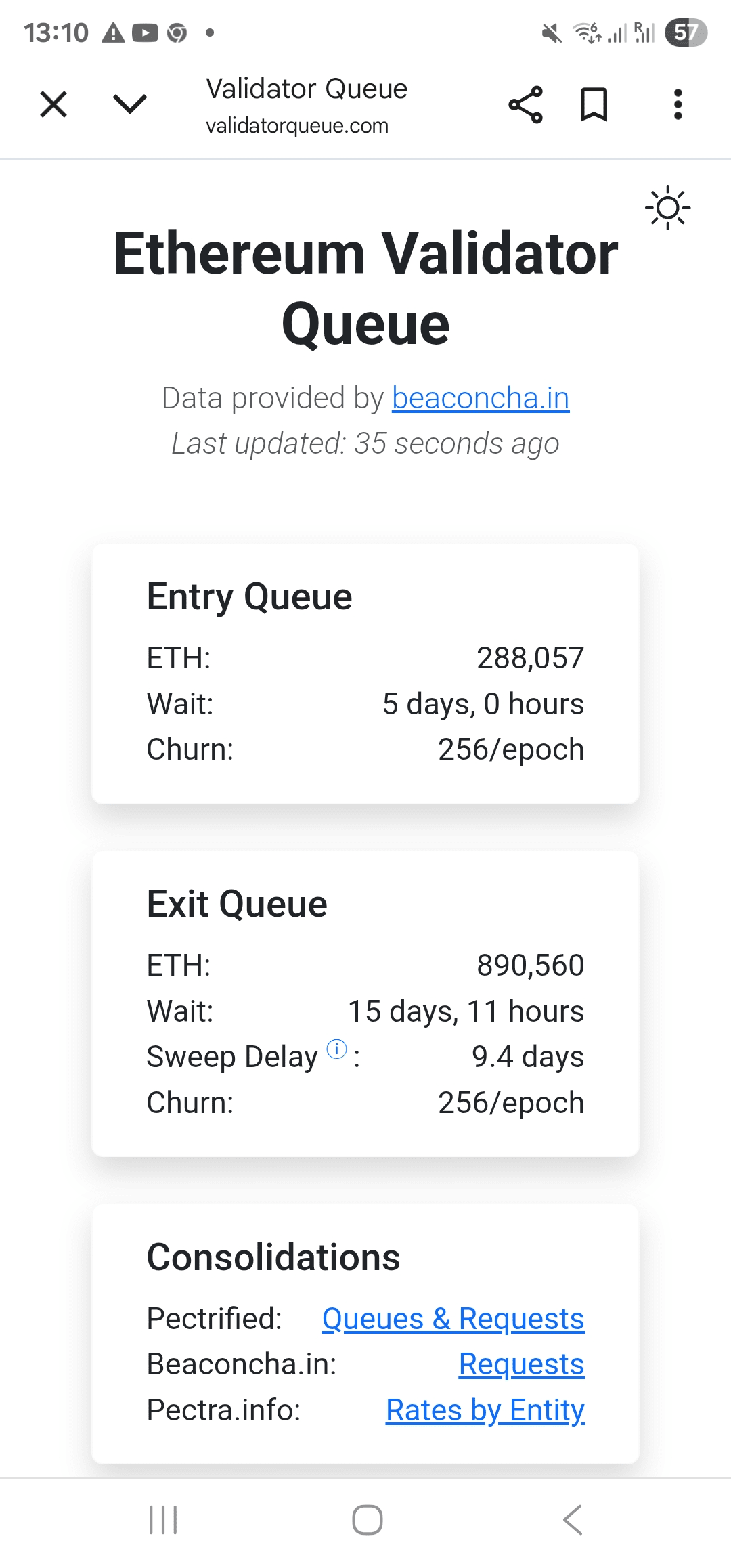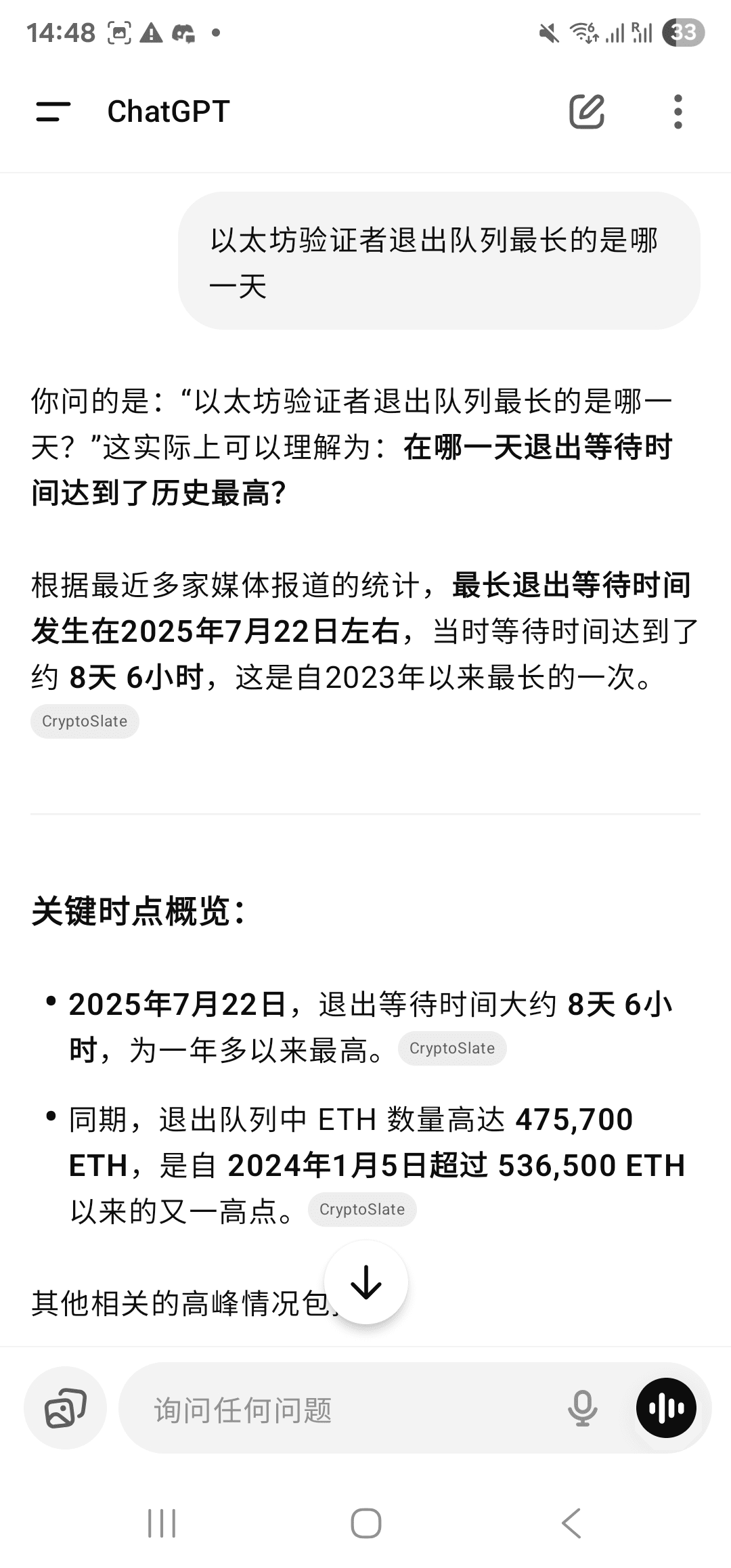Those bearish on Ethereum have been looking at the data in the chart below these days.

1. There are 288,000 ETH queued for staking to become Ethereum validators, and the queue takes 5 days.
2. There are 890,000 ETH queued for unstaking to exit the Ethereum validator identity, and the queue takes 15 days and 11 hours.
🔴 Ethereum officially said goodbye to the PoW mining mechanism after merging the Ethereum mainnet with the Beacon Chain on September 15, 2022, completing the transition from Proof of Work (PoW) to Proof of Stake (PoS) and fully entering the PoS consensus mechanism.
Retail investors can stake 32 ETH to become Ethereum validators and run a separate Ethereum validation node, participating in the Proof of Stake (PoS) consensus to propose and validate blocks while earning rewards.
Retail investors with less than 32 ETH can join a staking pool to share a single validation node with others.
In addition to staking 32 ETH to become a validator, running a separate validation node also requires running the Ethereum node client on a local computer and ensuring that this computer is always online without interruption; otherwise, if it goes offline, not only will there be no rewards but there will also be penalties (slashing).
Ethereum currently has over 1.2 million validators and more than 10,000 validation nodes.
🔴 Interpreting the Ethereum validator queue data in the chart, we can see several key points:
1. The number of people withdrawing their Ethereum validator identity is three times that of those joining.
2. Exiting the Ethereum validator identity is not an immediate process; you now need to wait 15 and a half days to unstake.
3. If we account for the difference between exits and entries, there are a net withdrawal of 602,503 ETH (890,560 - 288,057), valued at 2.7 billion USD, which will gradually unstake and flow into the market from today until before September 1.
🔴 Why are so many people exiting their validator identities now? It is speculated that these validators believe the price of ETH has already reached or is about to reach its peak, and unstaking can allow them to cash out at a high point.
🔴 Why do we have to wait 15 and a half days? I searched for the reason, which is mainly related to the design of the Ethereum validator exit process.
In the second chart, you can see an introduction to the process of removing validator identity:

To ensure network security and stability, Ethereum has designed a churn limit: a maximum of 256 validators can enter or exit each epoch (6.4 minutes). This translates to approximately 57,600 validators being processed (entering or exiting) each day.
This is to avoid situations (such as market crashes or hacker attacks) where hundreds of thousands of validators exit simultaneously, posing a security risk to the network.
The 15 and a half days wait for unstaking is also due to the high number of people in the exit queue; 890,560 ETH is approximately equal to 27,830 validators, and at the rate limit of 256 per epoch, it indeed takes 15 days to process these withdrawal requests.
🔴 I asked ChatGPT about the longest historical record for Ethereum validator exit queues, which was on August 15-16; now we are at the historical peak.
The second longest was on July 22 this year, when the exit queue required waiting for 8 days and 6 hours.

The question is: in the next 15 days, will anyone buy the 2.7 billion USD worth of ETH that will be unstaked and flow into the market?
It's up to big shots like Tom Lee from Wall Street’s ETH coin stock BitMine $BMNR.
It seems that 2.7 billion shouldn't be an incomprehensible figure for Wall Street; just a few days ago, Trump’s family coin stock ALT5 raised a total of 1.5 billion USD.

